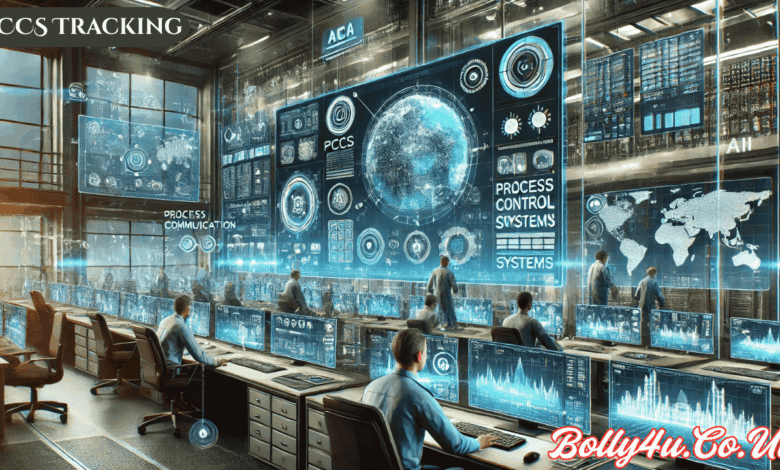PCCS Tracking System: Full Analysis and Insights

Introduction: What is PCCS Tracking?
PCCS tracking, an acronym often linked with Process Control and Communication Systems, refers to the methodologies and technologies used to monitor, log, and manage data across complex systems. These systems may include industrial automation platforms, healthcare logistics, government protocol compliance, military communications, or cloud-based tech infrastructures.
While “PCCS” can vary in specific use depending on context or industry, in most environments it encompasses the integrated tracking of digital signals, physical processes, command chains, and control sequences. Tracking ensures that these elements work harmoniously, securely, and in compliance with relevant protocols.
Historical Background and Evolution of PCCS Tracking
The need for effective tracking mechanisms within process and communication systems dates back to the early days of industrial automation and military defense communications. Back then, manual logs and paper-based reports were the primary means of oversight. As technology advanced, these systems transitioned to digital, and the complexity of operations required more advanced tracking mechanisms.
Tracking evolved as industries like energy, transport, telecom, aerospace, and cybersecurity sought ways to increase operational efficiency, minimize errors, and improve response times. Modern PCCS tracking involves real-time dashboards, automated alerts, AI-enhanced anomaly detection, and comprehensive reporting capabilities—all tied to a centralized control system.
Key Components of PCCS Tracking Systems
A standard PCCS tracking system comprises multiple integrated components:
![]()
1. Sensors and Data Collectors
These are responsible for gathering real-time input from machinery, communication devices, or environmental conditions. In a manufacturing setting, these could include pressure sensors, temperature monitors, and speed counters.
2. Processing Unit or Central Controller
This is the brain of the system. It analyzes incoming data against predefined rules and parameters. The central controller determines whether a response or adjustment is needed based on live inputs.
3. Communication Channels
These include wired or wireless mediums through which data is sent and received. Protocols such as Modbus, CAN bus, TCP/IP, or specialized defense-grade standards are commonly used for reliable communication in tracking.
4. Tracking Interface or Dashboard
A user-accessible platform—often cloud-based—that allows engineers, technicians, or administrators to view ongoing system performance, alerts, and logs. Most interfaces are designed to be highly visual, with color-coded alerts and dynamic charts.
5. Logging and Storage Systems
PCCS tracking wouldn’t be complete without the ability to record historical data. This is vital for compliance, diagnostics, and performance review. Many systems use redundant storage or blockchain verification for tamper-proof logs.
Applications of PCCS Tracking in Modern Industries
1. Industrial Automation
PCCS tracking is the backbone of modern smart factories. It allows for real-time monitoring of machine output, temperature control, and predictive maintenance. When integrated with AI, these systems can also forecast machine failure before it happens.
2. Telecommunications
In large-scale telecom operations, ensuring uninterrupted and quality communication is key. Tracking in this domain monitors signal strength, bandwidth usage, fault locations, and service-level compliance.
3. Healthcare & Pharmaceutical Logistics
Tracking medicine delivery chains, patient data transmissions, and environmental conditions of sensitive equipment (like MRI machines) are made possible with PCCS tracking systems.
4. Defense and Security
In mission-critical operations, PCCS tracking offers secure, real-time situational awareness. It logs every command, radio transmission, and equipment status, which is crucial for audit and accountability.
5. Cloud Services & Data Centers
With millions of interactions per second, cloud-based systems use tracking to monitor data transfer, server health, cooling systems, and cyber-intrusion attempts. It ensures uptime and data integrity.
Benefits of Effective PCCS Tracking
✔ Real-Time Alerts and Failover Management
PCCS tracking enables immediate detection of anomalies or errors. If a process goes off course, the system can either alert operators or trigger automatic contingency plans.
✔ Increased Operational Efficiency
By automating many of the tracking and reporting functions, human error is reduced. This leads to more reliable performance and significant time savings.
✔ Compliance and Standardization
PCCS tracking is essential for regulatory compliance in sectors like pharmaceuticals, nuclear energy, and aerospace. It ensures that processes are documented and standards are upheld.
✔ Enhanced Cybersecurity
Modern tracking systems often include encrypted communication and intrusion detection, offering an additional layer of security in data-sensitive operations.
PCCS Tracking vs. Traditional Tracking Systems
Traditional tracking systems are often siloed, monitoring one aspect of a process (e.g., just inventory or just temperature). PCCS tracking, however, is multi-dimensional and integrative. It monitors all aspects—mechanical, electrical, digital, and operational—within a unified ecosystem.
Where traditional systems operate reactively (logging what has happened), tracking is often proactive or even predictive, thanks to AI integration and real-time analytics.
Technological Innovations Shaping the Future of PCCS Tracking
💡 AI and Predictive Analytics
AI models analyze trends and can detect micro-patterns humans may miss. Predictive alerts based on machine learning improve system resilience and foresight.
💡 IoT and Edge Computing
With the rise of the Internet of Things (IoT), PCCS tracking can now occur directly at the edge of the network, closer to the data source, reducing latency and improving responsiveness.
💡 Blockchain for Immutable Logs
Blockchain tech is increasingly being used in PCCS systems for tamper-proof logging, especially where audit trails are crucial (e.g., government, finance, healthcare).
💡 5G and Ultra-Reliable Low Latency Communications (URLLC)
The speed and reliability of 5G are revolutionizing PCCS tracking in sectors like autonomous driving, drone management, and telemedicine.
Common Challenges and Solutions in Implementing PCCS Tracking
![]()
❌ Integration with Legacy Systems
Many industries still operate on outdated hardware or protocols, making integration a challenge. Solution: Use of modular adapters and protocol translators to bridge old and new systems.
❌ Cybersecurity Threats
As systems go online, they’re exposed to cyber risks. Solution: Regular patching, endpoint encryption, and AI-based threat monitoring.
❌ High Cost of Implementation
PCCS tracking systems can be expensive. Solution: Start with a phased implementation and prioritize high-risk areas first.
Future Outlook: What’s Next for PCCS Tracking?
The next decade will see PCCS tracking become even more central to operational frameworks. Its use will expand into smart cities, autonomous vehicles, cross-border logistics, and even space systems. Expect to see more self-healing systems, where PCCS doesn’t just report or alert, but acts autonomously to correct errors or reroute commands.
Government-level mandates for traceability and security compliance may also drive mass adoption across both private and public sectors. Moreover, with AI and quantum computing on the rise, PCCS will become faster, more adaptive, and deeply ingrained into daily life.
Conclusion
PCCS tracking is far more than just a logging tool—it’s a mission-critical control and insight mechanism that industries rely on to maintain order, efficiency, safety, and compliance. Whether it’s ensuring uninterrupted production in a factory, monitoring a secure defense channel, or verifying environmental controls in pharma logistics, tracking stands as a pillar of modern system integrity.
As industries continue to grow in complexity and scale, so will the demand for more robust, intelligent, and seamless tracking solutions.
Also Read: Xson208 Explained: A Deep Dive into the Purpose, Technology, and Future of Xson208



